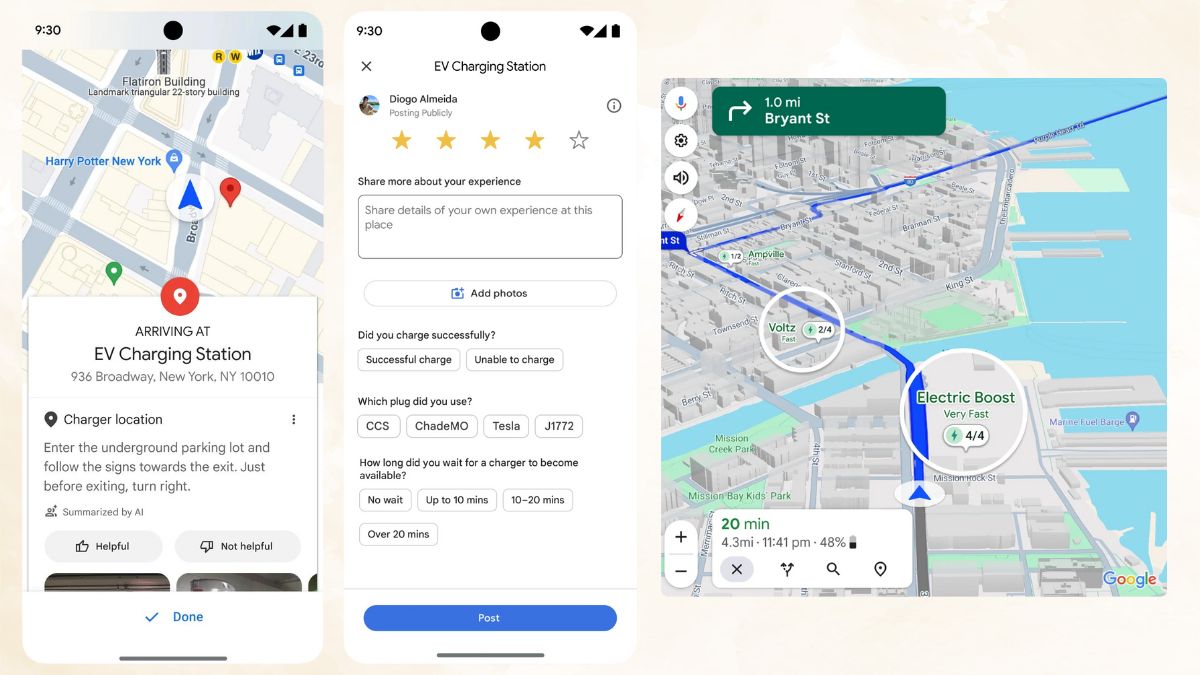- By Divanshi Sharma
- Thu, 18 Apr 2024 01:25 PM (IST)
- Source:JND
Google Maps is getting more electric vehicle (EV) friendly with a series of updates that will make it easier for EV owners to find and access charging stations. These updates will be available to users in the coming months and are designed specifically for vehicles with Google's built-in software.
As the number of electric vehicles on the roads increases, so does the need for accessible charging infrastructure. However, locating EV chargers can be challenging compared to finding traditional petrol pumps. The upcoming Google Maps update aims to solve this problem by providing detailed information about the specific location of EV chargers.

One of the main challenges EV owners face is finding chargers, as they are sometimes hidden or not easily visible. Google Maps will use Artificial Intelligence (AI) to collect information about EV charger locations based on user reviews. This will help users identify chargers more easily, especially those located in less visible places.
Moreover, Google Maps will provide turn-by-turn navigation directions to guide users directly to the EV charger location. This will simplify the process of finding and accessing charging stations, especially during long journeys when EV owners may need to recharge their car batteries.
Additionally, Google is collecting more information about EV chargers from user reviews. When a user leaves a review, they will be asked to provide details such as the types of charging plugs available and the waiting time for charging. This information will be valuable for other users for deciding whether to use a particular EV charger.
Initially, these features will be available for vehicles with Google's built-in software and the EV charger information will be automatically displayed when the battery charge reaches a certain level. The rollout will first be introduced in the US and later expand to other regions for electric vehicle owners worldwide.

